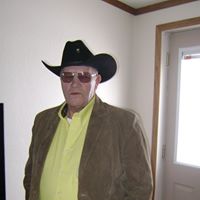Larry W Petersen
age ~66
from Pocatello, ID
- Also known as:
-
- Willis C Petersen
- Larry W Peterson
- Jared Petersen
- Larry Petersen Willis
- Phone and address:
-
789 Marinus Ln, Pocatello, ID 83201
2086378935
Larry Petersen Phones & Addresses
- 789 Marinus Ln, Pocatello, ID 83201 • 2086378935
- 5230 8800 N #W, Tremonton, UT 84337 • 2086378935
- Ogden, UT
Resumes

Larry Petersen
view sourceLocation:
United States

Larry Petersen
view sourceLocation:
United States

Retired It Professional
view sourceLocation:
South Jordan, Utah
Industry:
Information Technology and Services

Larry Petersen
view sourceLocation:
United States

Larry Petersen
view sourceLocation:
United States

Larry Petersen
view sourceLocation:
United States

Larry Petersen
view sourceLocation:
United States
Name / Title
Company / Classification
Phones & Addresses
President
Midstates Bank
Banks. Deposit Protection. Automated Teller Machines. Real Estate Services. On-Line Financial Services. Retirement Planning Service. Mortgage Brokers. Real Estate Loans. Loans - Small Business. Loans. Investment Advisory Service. Financing. Financial Planning Consultants
Banks. Deposit Protection. Automated Teller Machines. Real Estate Services. On-Line Financial Services. Retirement Planning Service. Mortgage Brokers. Real Estate Loans. Loans - Small Business. Loans. Investment Advisory Service. Financing. Financial Planning Consultants
812 Durant St, PO Box 717, Harlan, IA 51537-1625
7127552126
7127552126
Organizer
Gold 'n Glass LLC
Us Patents
-
Sensor Calibration Using Selectively Disconnected Temperature
view source -
US Patent:7373266, May 13, 2008
-
Filed:Jul 28, 2006
-
Appl. No.:11/460951
-
Inventors:Larry Petersen - Pocatello ID, US
Jose Taveira - Pocatello ID, US -
Assignee:ON Semiconductor - Phoenix AZ
-
International Classification:G06F 19/00
-
US Classification:702104, 73708, 374 1, 702 50, 702 85, 702 86, 702 99
-
Abstract:Calibration of a sensor circuit that includes a sensor, a temperature measurement circuit and a signal processing path. The sensor senses a physical parameter to be measured and generates an electrical sensor output signal representing the physical parameter. The temperature measurement circuit outputs a measured temperature. The signal processing path is coupled to the sensor so as to receive the electrical sensor output signal and use the measured temperature to compensate for temperature variations in the electrical sensor output signal. During calibration, the output voltage of the signal processing path is measured at multiple temperatures, and at multiple values of the physical parameter being measured at each temperature while the signal processing path is disconnected from using the measured temperature of the temperature measurement circuit.
-
Non-Linear Sensor Temperature Compensation Using Summed Temperature Compensation Signals
view source -
US Patent:8081006, Dec 20, 2011
-
Filed:Jul 28, 2006
-
Appl. No.:11/460948
-
Inventors:Munenori Tsuchiya - Ueda, JP
Lucas Laren Piquet - Pocatello ID, US
Larry Petersen - Pocatello ID, US -
Assignee:Semiconductor Components Industries, LLC - Phoenix AZ
-
International Classification:G01R 27/08
-
US Classification:324721
-
Abstract:A sensor temperature compensation circuit that includes a sensor and non-linear temperature compensation circuit that compensates for non-linear temperature dependencies in offset and/or gain generated by the sensor. For instance, to at least partially compensate for offset temperature dependencies, a summer adds two offset compensation signals, the ratio of the second to the first being a function of temperature. The summed signal may then be multiplied by a function of temperature. The summed signal may then be used to provide the non-linear temperature compensation to the offset. Alternatively or in addition, to at least partially compensate for gain temperature dependencies, a summer adds two gain compensation signals, the ratio of the second to the first being a function of temperature. The summed signal may then be multiplied by a function of temperature. The summed signal may then be used to provide non-linear temperature compensation to the gain.
-
Operating Method For Rom Array Which Minimizes Band-To-Band Tunneling
view source -
US Patent:58380469, Nov 17, 1998
-
Filed:Jun 13, 1996
-
Appl. No.:8/665136
-
Inventors:Rustom F. Irani - Santa Clara CA
Boaz Eitan - Ra'anana, IL
Mark Michael Nelson - Pocatello ID
Larry Willis Petersen - Pocatello ID -
Assignee:Waferscale Integration Inc. - Fremont CA
American Microsystems, Inc. - Pocatello ID -
International Classification:H01L 2976
-
US Classification:257369
-
Abstract:A read only memory (ROM) array is disclosed which includes a) a voltage supply providing an operating voltage level, b) a plurality of word-lines, c) a multiplicity of ROM transistors, and d) a word-line clamper. The ROM transistors are divided into turned on and turned off transistors. Each ROM transistor has a gate connected to one of the word-lines, a gate oxide beneath the gate, whose thickness is less than 250. ANG. , and a channel beneath the gate oxide. The turned off transistors additionally have a ROM implant in their channel whose dosage is no larger than the amount which generates a predetermined desired minimal band-to-band tunneling current The ROM implant and gate oxide thickness define a threshold voltage for the tamed off tranistors, the threshold voltage being less than the operating voltage level. The word-line damper provides a word-line voltage to each of the word-lines, the word-line voltage being clamped to a voltage level no higher than the threshold voltage of the turned off transistor.
-
3V/5V Input Buffer
view source -
US Patent:58381686, Nov 17, 1998
-
Filed:Sep 5, 1996
-
Appl. No.:8/708595
-
Inventors:Larry W. Petersen - Pocatello ID
-
Assignee:American Microsystems, Inc. - Pocatello ID
-
International Classification:H03K 19092
-
US Classification:326 81
-
Abstract:An input buffer capable of operating at a first power supply voltage level or a second power supply voltage level with the operating voltage level selectable during manufacture. At least one shortable transistor is disposed between the power supply voltage input and a buffer circuit which is connected between an input and an output of the buffer circuit. When the first voltage is the intended operating voltage the at least one shortable transistor is shorted. The first operating voltage level meets the requirements of a CMOS device and the second operating voltage level meets the requirements of a TTL device. The shortable transistor can be either a p-channel or an n-channel transistor and the short can be done by a metal layer short, a polysilicon short, a depletion implant, or with vias during manufacture. Transistors in the buffer circuit are sized to provide an acceptable TTL device level trip point when the input buffer is operated at 5 volts and which also provides an acceptable CMOS device level trip point when the input buffer is operated at 3 volts. Transistors in the buffer circuit are provided to turn OFF the input buffer at the direction of an external circuit.
-
Self Adjusting Sense Amplifier Clock Delay Circuit
view source -
US Patent:56823533, Oct 28, 1997
-
Filed:Jun 13, 1996
-
Appl. No.:8/665151
-
Inventors:Boaz Eitan - Ra'anana, IL
Larry Willis Petersen - Pocatello ID
Yaron Slezak - Kiriat Motzkin, IL -
Assignee:Waferscale Integration Inc. - Fremont CA
American Microsystems, Inc. - Pocatello ID -
International Classification:G11C 800
-
US Classification:365233
-
Abstract:A clock delay circuit for generating a delay for a sense amplifier release signal in an integrated circuit semiconductor memory device is disclosed. Rather than utilize traditional programmable capacitors that must be trimmed on a die by die basis, the novel clock delay circuit disclosed utilizes a small ROM, EPROM, EEPROM or FLASH array coupled to a bit line emulator to provide a clock delay matched to the larger main array. The size of the small memory array is on the order of 5 to 10 bit lines by 5 to 10 word lines. One cell within the small array is fixed to be continuously selected. The selected cell is coupled to the clock delay node along with the bit line emulator. The bit line emulator models the capacitance of the actual bit line used in the main array. However, the circuit is constructed so that a much larger signal is generated by the delay circuit such that sense amplifiers detect the correct signal. The CMOS based clock delay circuit uses the emulated array to generate a delta or margin that accurately tracks the delays within the main array with variations in temperature, supply voltage and process.
Medicine Doctors

Larry S. Petersen
view sourceSpecialties:
Family Medicine
Work:
Hawkins Petersen & Foote Mds
31 Winham St, Salinas, CA 93901
8317710244 (phone), 8317710243 (fax)
31 Winham St, Salinas, CA 93901
8317710244 (phone), 8317710243 (fax)
Education:
Medical School
Western Univ of Health Sciences College of Osteopathic Medicine of the Pacific
Graduated: 1988
Western Univ of Health Sciences College of Osteopathic Medicine of the Pacific
Graduated: 1988
Procedures:
Arthrocentesis
Destruction of Benign/Premalignant Skin Lesions
Electrocardiogram (EKG or ECG)
Hearing Evaluation
Osteopathic Manipulative Treatment
Vaccine Administration
Destruction of Benign/Premalignant Skin Lesions
Electrocardiogram (EKG or ECG)
Hearing Evaluation
Osteopathic Manipulative Treatment
Vaccine Administration
Conditions:
Abnormal Vaginal Bleeding
Acne
Acute Bronchitis
Acute Conjunctivitis
Acute Pharyngitis
Acne
Acute Bronchitis
Acute Conjunctivitis
Acute Pharyngitis
Languages:
English
Spanish
Spanish
Description:
Dr. Petersen graduated from the Western Univ of Health Sciences College of Osteopathic Medicine of the Pacific in 1988. He works in Salinas, CA and specializes in Family Medicine.

Larry D. Petersen
view sourceSpecialties:
Anesthesiology
Work:
Ozark Anesthesia Associates Inc
3801 S National Ave, Springfield, MO 65807
4172694550 (phone), 4172694558 (fax)
3801 S National Ave, Springfield, MO 65807
4172694550 (phone), 4172694558 (fax)
Education:
Medical School
Creighton University School of Medicine
Graduated: 1981
Creighton University School of Medicine
Graduated: 1981
Languages:
English
Description:
Dr. Petersen graduated from the Creighton University School of Medicine in 1981. He works in Springfield, MO and specializes in Anesthesiology. Dr. Petersen is affiliated with Cox Medical Center South.
Googleplus

Larry Petersen

Larry Petersen

Larry Petersen

Larry Petersen

Larry Petersen

Larry Petersen

Larry Petersen

Larry Petersen
Plaxo

Larry Petersen
view sourceAZ, USAMedical Device business executive. Healthcare and Life Sciences industry. Specialist in Business Development for medical device, medical equipment and... Medical Device business executive. Healthcare and Life Sciences industry. Specialist in Business Development for medical device, medical equipment and pharmaceutical firms. Extensive International Business Development experience.

Larry Petersen
view sourceNew York, NY

Larry Petersen
view sourceOakland California
Youtube
Classmates

Larry Petersen
view sourceSchools:
Marshall High School Minneapolis MN 1954-1958
Community:
Dale Gustafson, James Anderson, Brian Young

Larry Petersen
view sourceSchools:
Whitefish High School Whitefish MT 1956-1960
Community:
Danette Hofland

Larry Petersen
view sourceSchools:
Upton High School Upton WY 1992-1996, Moorcroft High School Moorcroft WY 1992-1996
Community:
Karron Johnson

Larry Petersen
view sourceSchools:
South High School Salt Lake City UT 1963-1967
Community:
Kathleen Renshaw

Larry Petersen
view sourceSchools:
Whelan Elementary School Lennox CA 1951-1958
Community:
Sabra Michelle, Ray Brookins, Kisheen Cantrell

Larry Petersen
view sourceSchools:
Washington Park High School Racine WI 1983-1987

Larry Petersen
view sourceSchools:
Dalhousie Regional Complex High School Dalhousie NB 1970-1974
Community:
Christen Petersen, Ronald Bernard, Drapeau Drapeau

Larry Petersen
view sourceSchools:
Immaculate Conception School Toledo OH 1951-1955
Community:
Katherine Geldert, Bernard Urbina

Larry Petersen
view source
Larry Petersen
view source
Larry Petersen
view source
Larry Petersen
view source
Larry Petersen
view source
Larry Petersen
view source
Larry Petersen
view source
Larry Petersen
view sourceFlickr
Myspace
Get Report for Larry W Petersen from Pocatello, ID, age ~66


















